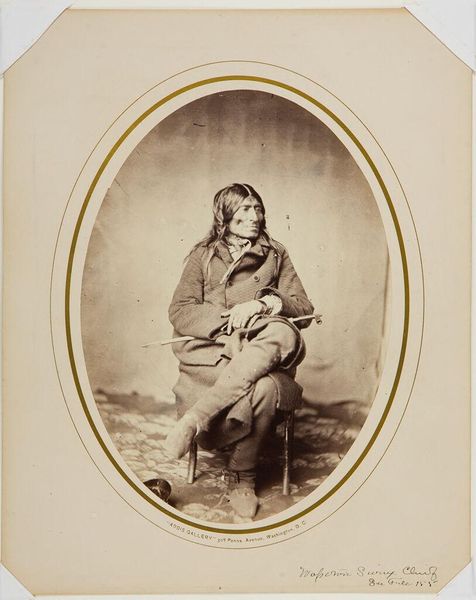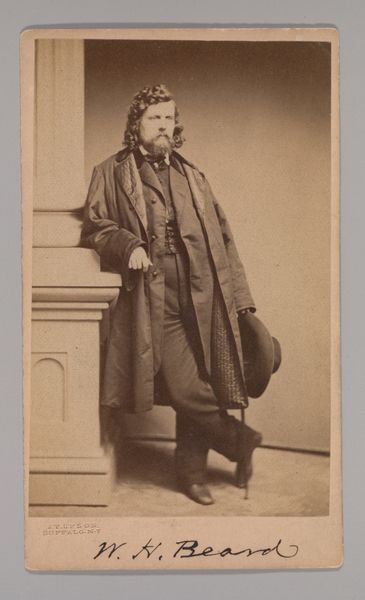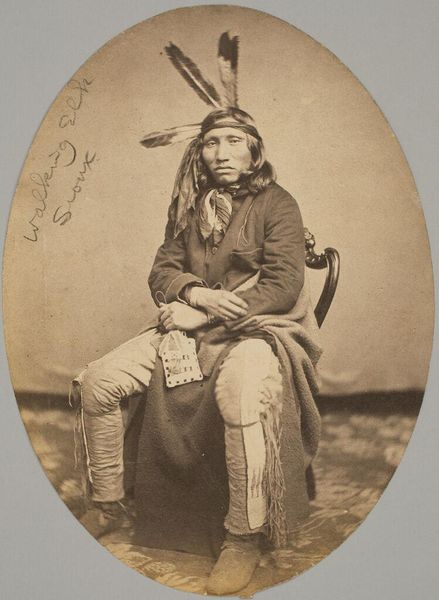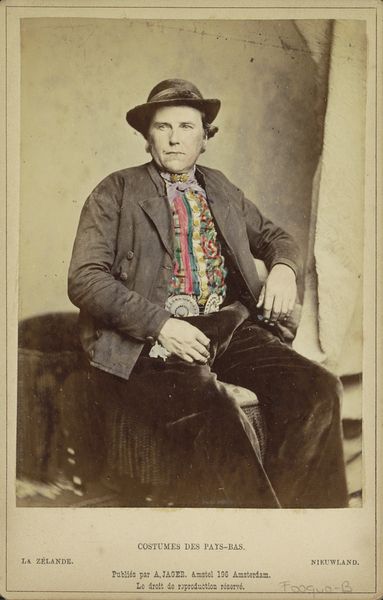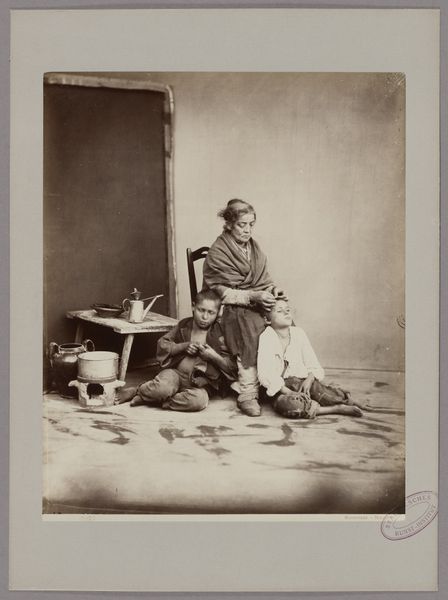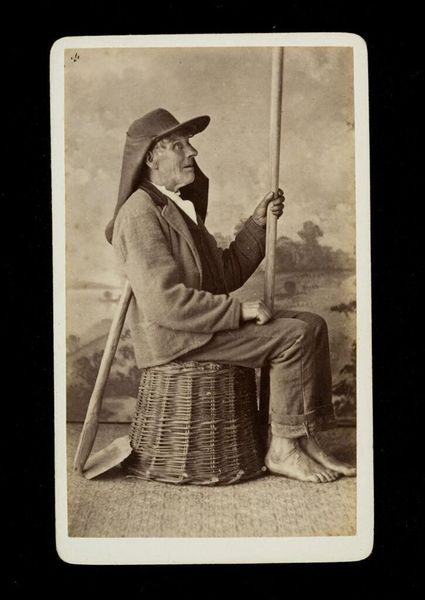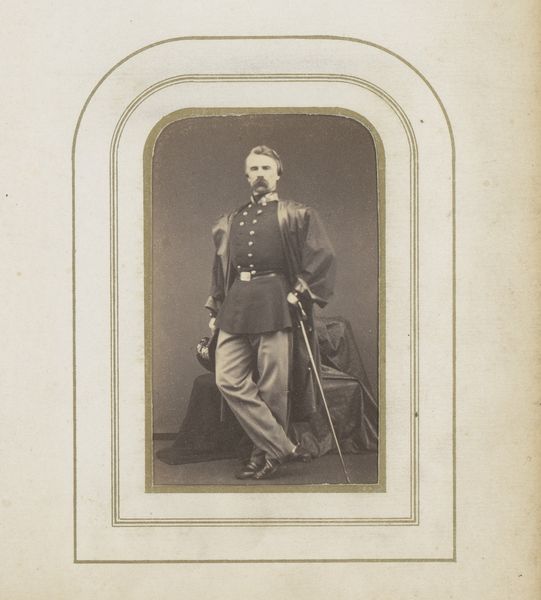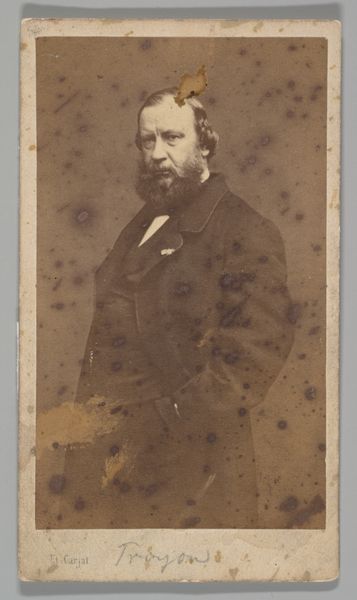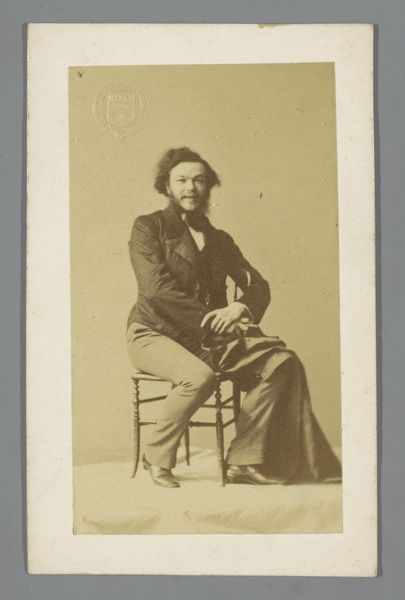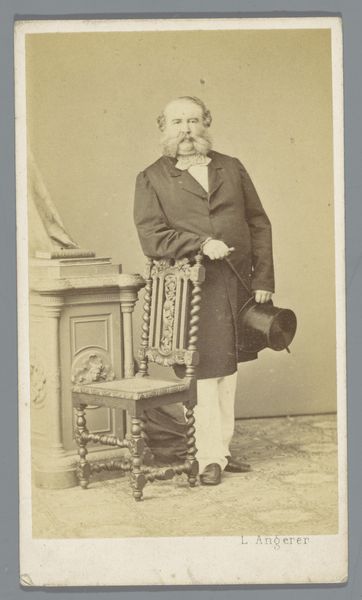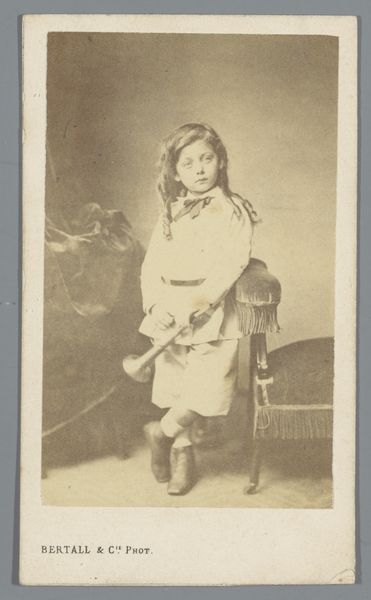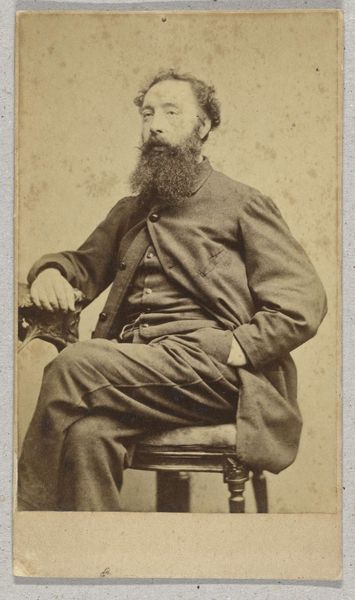![[Studio Portrait: Man Seated on Wooden Box ] by Juan de la Cruz Palomino](/_next/image?url=https%3A%2F%2Fd2w8kbdekdi1gv.cloudfront.net%2FeyJidWNrZXQiOiAiYXJ0ZXJhLWltYWdlcy1idWNrZXQiLCAia2V5IjogImFydHdvcmtzL2QyODJkNDBlLWVkNDItNDIwZS1iN2M2LTA0NzFiOGYxNWVkYy9kMjgyZDQwZS1lZDQyLTQyMGUtYjdjNi0wNDcxYjhmMTVlZGNfZnVsbC5qcGciLCAiZWRpdHMiOiB7InJlc2l6ZSI6IHsid2lkdGgiOiAxOTIwLCAiaGVpZ2h0IjogMTkyMCwgImZpdCI6ICJpbnNpZGUifX19&w=3840&q=75)
[Studio Portrait: Man Seated on Wooden Box ] 1860s - 1870s
0:00
0:00
photography, gelatin-silver-print
#
portrait
#
self-portrait
#
photography
#
gelatin-silver-print
#
realism
Dimensions: Image: 9.2 x 5.6 cm Mount: 9.9 x 6.3 cm
Copyright: Public Domain
Editor: This is "[Studio Portrait: Man Seated on Wooden Box ]" by Juan de la Cruz Palomino, probably taken sometime in the 1860s or 70s, and it's a gelatin-silver print. It has such an immediate, unvarnished feel, you know? Makes me wonder, what do you see when you look at this piece? Curator: I'm drawn to how the stark realism captures more than just a likeness. Look at his clothes, the simple box he sits on. The box isn't ornamented, it is there to lift him into the space where the light illuminates his face. The symbols point to a life lived simply, perhaps with a connection to labor. He is set against the patterned tile that separates him from the bare ground. Notice also his direct gaze. Editor: He does seem very present, doesn't he? And that gaze feels challenging somehow. Curator: Indeed. There is a sense of lived experience etched into his features. How might his dress also speak of identity or even resistance in that era? Perhaps this is a purposeful statement of self. Think about it – every element is carefully considered, contributing to the story he presents. What do you make of his bare feet, seemingly unusual for a formal portrait of this period? Editor: I guess I hadn't considered it being that deliberate, more like just capturing a moment. But the bare feet could suggest vulnerability, or a closeness to the earth? Curator: Precisely. The vulnerability invites empathy. The artist chose those symbols, just as we might choose the details of our own self-presentation today. So we must also acknowledge Palomino. What if, in staging himself with these details, he memorializes himself through continuity and culture? Editor: I never would have considered this from a perspective of symbolism and visual culture, so that helps bring some new context for my understanding of photography in art! Curator: Exactly. These enduring visual motifs and traditions connect the work, offering continuous insight into identity over time.
Comments
No comments
Be the first to comment and join the conversation on the ultimate creative platform.
